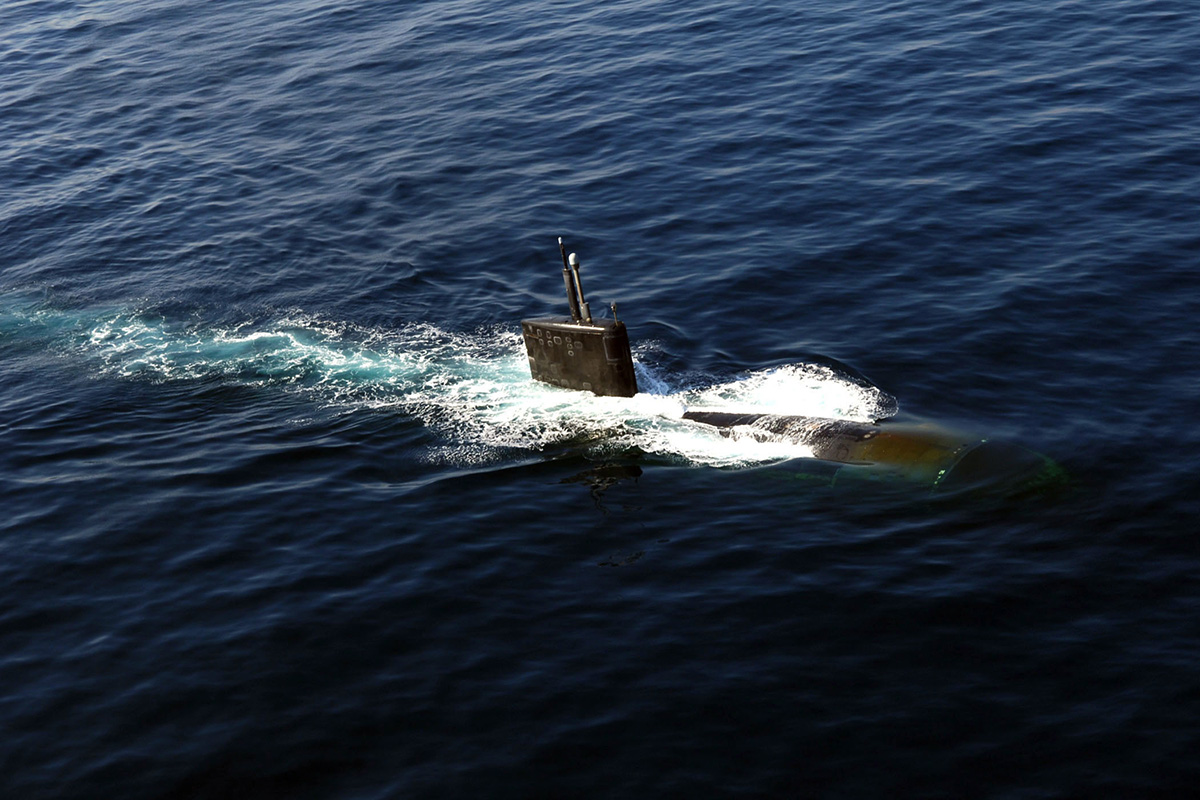
Sea Control Mission Area
Program Areas
Anti-Submarine Warfare Program Area
Submarines present an asymmetric threat to global commerce, freedom of navigation, and naval operations. Submarines have proliferated globally; there are currently more than 40 countries operating more than 500 submarines worldwide. APL’s Anti-Submarine Warfare (ASW) Program Area provides assured access through deterrence, denial, and defeat of adversary submarines.
The ASW Program Area provides advanced capability development through the modernization of large ASW platform systems as well as advanced technology for the next generation of integrated ASW capabilities. We lead open-architecture sonar and combat systems programs to increase their affordability, timeliness, operability, and reliability. We apply data-driven performance measurement, assessment, and modeling of ASW systems. We develop innovative system-of-systems solutions to address the most stressing ASW scenarios. We deliver sensors, systems, algorithms, and automation to improve fleet performance against the most challenging threats.
Maritime Expeditionary Warfare Program Area
The Maritime Expeditionary Warfare Program Area tackles the Navy’s toughest challenges in controlling the seas to deliver effects far forward. We deliver mission-focused and informed solutions that are operationally relevant, technically feasible, and mission ready. We convert imagination into reality.
Our expertise includes developing and integrating revolutionary emerging technology concepts for the Department of Defense, leading development of autonomy testing and evaluation tools, exploring next-generation mine warfare capabilities, pursuing new concepts for expeditionary logistics, maturing and fielding maritime uncrewed systems, enabling capabilities for the Special Operations Forces (SOF), and addressing human-centered challenges and front-end innovation across the Navy.
Specific areas of expertise include:
- Crewed/uncrewed teaming capabilities, including developing trust of uncrewed systems, machine understanding of human intent and prediction of needs, and autonomous resource allocation and decision-making
- Innovative technologies, systems, training, and concepts that improve operational readiness and logistics capabilities
- Novel technologies, systems, training, tactics, and concepts that enhance the capabilities of maritime SOF
- Enabling front-end innovation, including rapid prototyping, modeling and simulation, and testing and evaluation of systems in a virtual environment
- Mining and mine countermeasures, including sensor processing, command and control, and both kinetic and nonkinetic effects
Submarine Warfare Program Area
The Submarine Warfare Program Area is dedicated to maximizing the lethality of our nation’s submarines while optimizing their security and survivability. Employing innovation and sound systems engineering principles, our projects enhance submarine capabilities with improved stealth, enhanced sensors, advanced processing, creative payloads, and the necessary tactical guidance to ensure that ballistic missile submarines remain a credible, reliable, and assured strategic deterrent and that fast-attack and guided-missile submarines can gain/maintain access and operate anywhere, anytime in support of national objectives.
Submarines, with their inherent stealth, bring unique capabilities to all phases of warfare, including preparation of the battlespace, crisis response, kinetic and nonkinetic attack, and all levels of deterrence. With worldwide anti-access technology growing, submarines will be first to fight, controlling the seas and delivering effects to the joint force commander.
We are committed to maintaining U.S. undersea dominance by supporting existing submarine classes and acquisition programs for the Columbia class, future Virginia-class variants, and SSN(X).
Our expertise spans:
- Submarine security, survivability, cyber defense, signature management, and understanding the operating environment
- Stealth
- Advanced sensors, navigation, timing, communications, and payloads
- Modeling and simulation
- Systems engineering